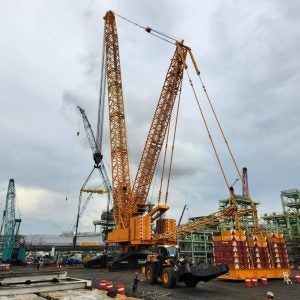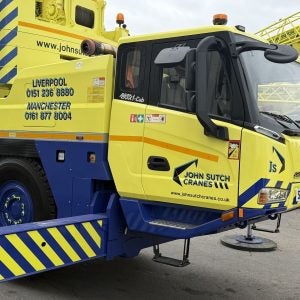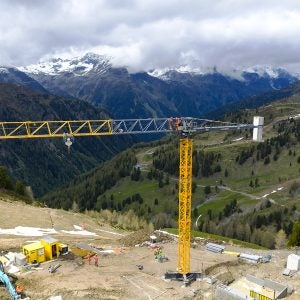Every once in a while, Cranes Today gets emails or calls asking for advice on hiring a crane for lifting people with: not, generally, because the correspondent is running an oil rig and needs advice on personnel transfer, or because they are working on a hard-to-reach mountain side, but because they reckon it’s an easy stunt they can make a bit of cash on. Few of the people we speak to show much knowledge of the crane industry, let alone of carrying out the sort of careful risk assessment and lift plan that should be used when lifting people. The truth is, cranes aren’t designed for lifting people. The standards they are built to take no account of this use. What might be an acceptable range of movement when you’ve got a load of rebar on the hook could break limbs if you’re lifting members of the public. What might be an acceptable risk of failure for a job lifting a bucket of concrete, isn’t when someone’s life depends on the lift going perfectly.
Sadly, members of the public have died after being lifted by cranes. If you’re doing this sort of job, that should weigh on your conscience. If it doesn’t, you should at least consider what it might mean for your wallet.
For a long time, manufacturers’ manuals have expressly forbidden using cranes for this type of use. That has meant that (unless a user has negotiated a specific deal) anyone using a crane like this wouldn’t be able to claim on their insurance. A waiver signed by people being lifted by the crane will have little chance of being recognised in court. In any case, if someone dies as a result of an accident, or is left unable to support their dependents, that waiver isn’t going to affect claims by their family. The manufacturers, through the lifting equipment manufacturers’ association the FEM, and with the support of associations including ESTA, the AEM, CICA, and the SC&RA, have recently gone even further to drive this point home. A position paper issued last month says, in bold type, “Mobile cranes shall never be used for entertainment purposes, e.g. lifting of persons for shows, bungee jumping, dinner-in-the-sky or lifting of other structures with people on the structure or underneath.”
That’s the sort of advice that you really need to listen to, at least if you want to make sure you don’t have a human life or a crippling court case on your hands. The position paper also gives some really useful advice on what you should do when you do have to lift people.
You should be able to find a copy of the paper at www.fem-eur.com If you can’t, email me and I’ll send you a copy.






